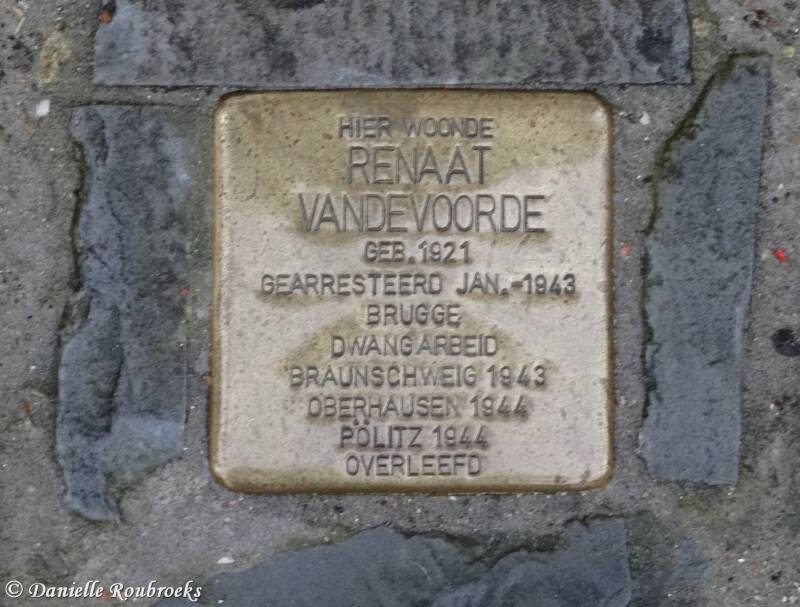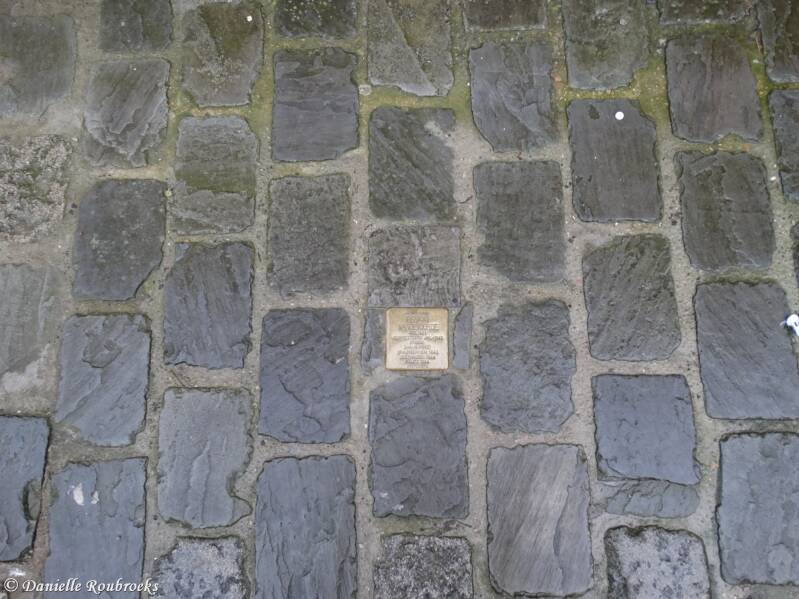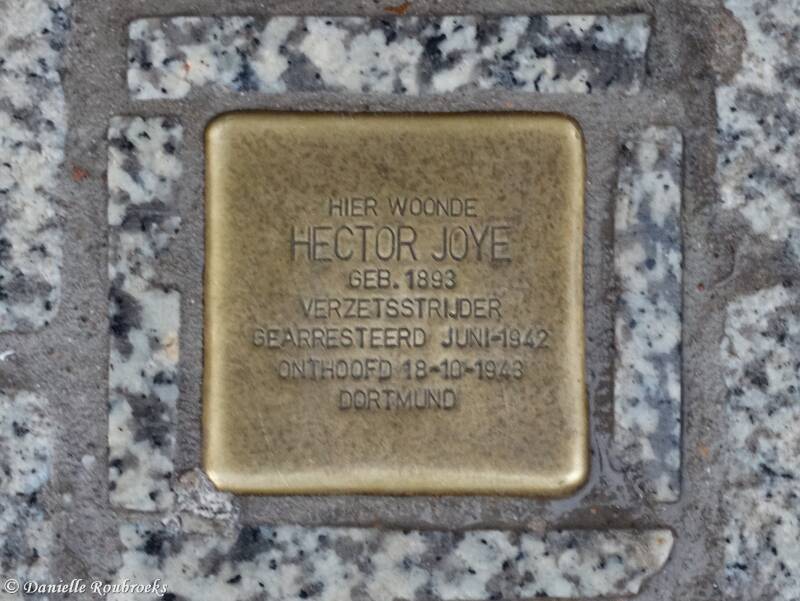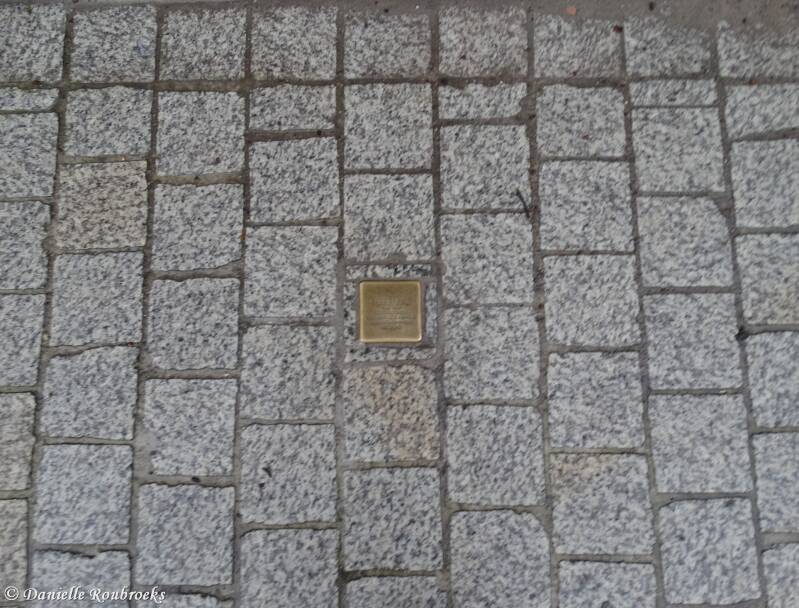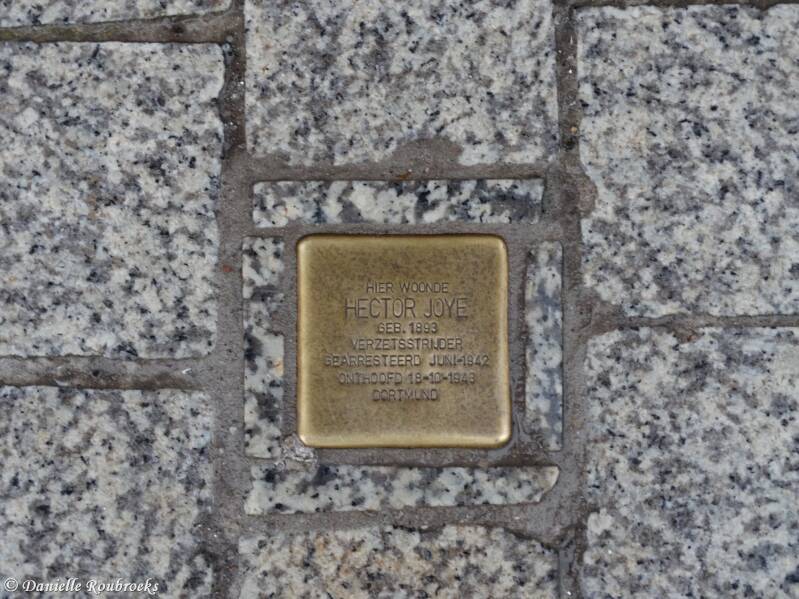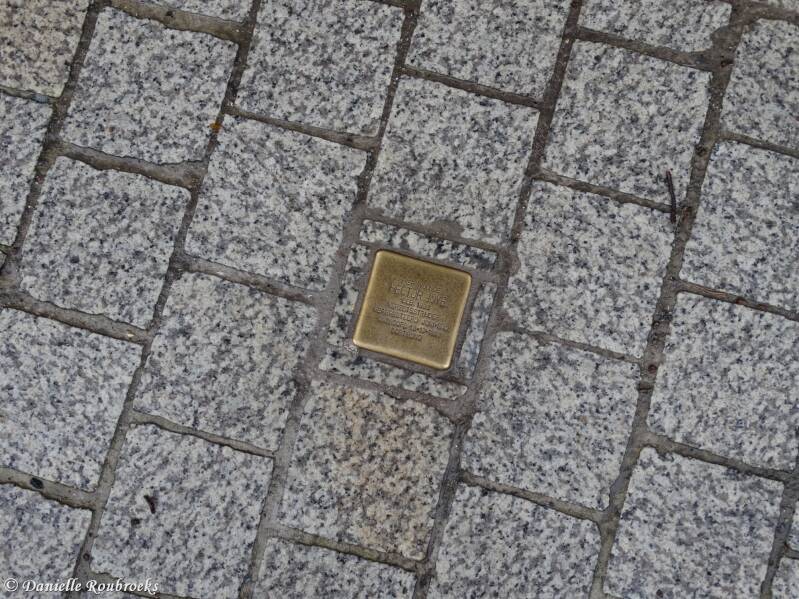Brugge - Stolpersteine
Information: Wikipedia
A Stolperstein literally "stumbling stone", metaphorically a "stumbling block" is a sett-size, 10 by 10 centimetres (3.9 in × 3.9 in) concrete cube bearing a brass plate inscribed with the name and life dates of victims of Nazi extermination or persecution.
The Stolpersteine project, initiated by the German artist Gunter Demnig in 1992, aims to commemorate individuals at exactly the last place of residency—or, sometimes, work—which was freely chosen by the person before he or she fell victim to Nazi terror, euthanasia, eugenics, was deported to a concentration or extermination camp, or escaped persecution by emigration or suicide. As of 29 March 2018, over 67,000 Stolpersteine have been laid in 22 countries, making the Stolpersteine project the world's largest decentralized memorial.
The majority of Stolpersteine commemorate Jewish victims of the Holocaust. Others have been placed for Sinti and Romani people (then also called "gypsies"), homosexuals, the physically or mentally disabled, Jehovah's Witnesses, black people, members of the Communist Party, the Social Democratic Party, and the anti-Nazi Resistance, the Christian opposition (both Protestants and Catholics), and Freemasons, along with International Brigade soldiers in the Spanish Civil War, military deserters, conscientious objectors, escape helpers, capitulators, "habitual criminals", looters, and others charged with treason, military disobedience, or undermining the Nazi military, as well as Allied soldiers.
List of Stolpersteine in the city of Brugge
Mortierstraat 46: RENAAT VANDEVOORDE
Sint-Jorisstraat 69: HECTOR JOYE
Mortierstraat 46
hier woonde
RENAAT
VANDEVOORDE
geb. 1921
gearresteerd Jan.-1943
Brugge
dwangarbeid
Braunschweig 1943
Oberhausen 1944
Pölitz 1944
overleefd
Mortierstraat 46
here lived
RENAAT
VANDEVOORDE
born 1921
arrested Jan.-1943
Brugge
forced labor
Braunschweig 1943
Oberhausen 1944
Pölitz 1944
survived
Renaat Vandevoorde was born on July 16, 1921, the son of Julien Vandevoorde and Marie Tratsaert. He was the eldest of three children. Renaat married Ludwina Landschoot in 1942. He worked in a small plumbing company in Bruges. He died shortly after his centenary, on October 6, 2021.
Renaat was requisitioned for compulsory employment, but he decided not to return to work after a short period in which he could go home. He went into hiding with his mother. Eventually he returned to the city in search of work and was arrested in the Langestraat by a collaborator and locked up in the Bruges prison. Via the prison in Ghent he ended up in Braunschweig (Germany), in a closed labor camp of a company in the metal industry, Wilke-Werke AG. He was trained as a welder and had to carry out repair work on blast furnaces, among other things. In January 1944 he was transferred to another labor camp of the same company, this time in Oberhausen, where he had to weld plates for petrol tanks. In June 1944 he was transferred again, this time in Pölitz on the Oder, near Stettin (now Police in Poland), to yet another branch of the same company. There he had to carry out repairs on thirty-metre high gas boilers, among other things. Renaat was able to take advantage of the confusion in those last weeks of the Nazi regime to escape and mixed with a group of German refugees who fled west by train. Via Lübeck he ended up back in Braunschweig. A few days later the Americans appeared in the city and he was able to get to Münster by truck, eventually returning to Bruges by train via Brussels. He was back home on April 26, 1945.
Sint-Jorisstraat 69
hier woonde
HECTOR JOYE
geb. 1893
verzetsstrijder
gearresteerd juni-1942
onthoofd 18-10-1943
Dortmund
Sint-Jorisstraat 69
here lived
HECTOR JOYE
born 1893
resistance fighter
arrested june-1942
beheaded 18.10.1943
Dortmund
Hector Joye, born September 13, 1893 in SInt-Eloois-Winkel and married to Louise Legros, director of the Normal School in Sint-Jorisstraat. They had 2 children: Roger (°27 April 1927) and Michel (°28 February 1929). Hector Joye was a carpenter by training and a veteran of the First World War. He had suffered permanent injuries from a gas attack and was in poor health.
During the First World War he became friends with Father Scheutist Jozef Raskin. During the first weeks of the Second World War, the Normal School was converted into an emergency hospital under the impulse of director Louise Legros and her husband Hector Joye. They called on their friend and comrade in arms from the First World War, Joseph Raskin, to help to collect the necessary medical material. Together they formed a strong team and they called themselves 'Leopold Vindictive'. A found pigeon was released on July 12, 1941 and returned to its loft in England the same day, with the precious information in a tube on its leg. Afterwards they failed to re-establish contact with the English. Through repeated attempts to make contact via radio messages, the Germans became interested in 'Leopold Vindictive'. Eventually they tracked down the group and Jozef Raskin, Hector Joye and Arseen Debaillie were arrested. On June 25, 1942, Hector Joye was arrested and transferred to the prison of Saint-Gillis (Brussels). The three men were dragged via the prisons of Brauweiler, Bochum and Wuppertal to the Esterwegen camp where they were eventually brought before a German 'people's tribunal' in nearby Papenburg. The trial was a farce, the death penalty was already determined in advance. Hector Joye, Arseen Debaillie and Joseph Raskin were guillotined in Dortmund in quick succession on the same day, October 18, 1943.


